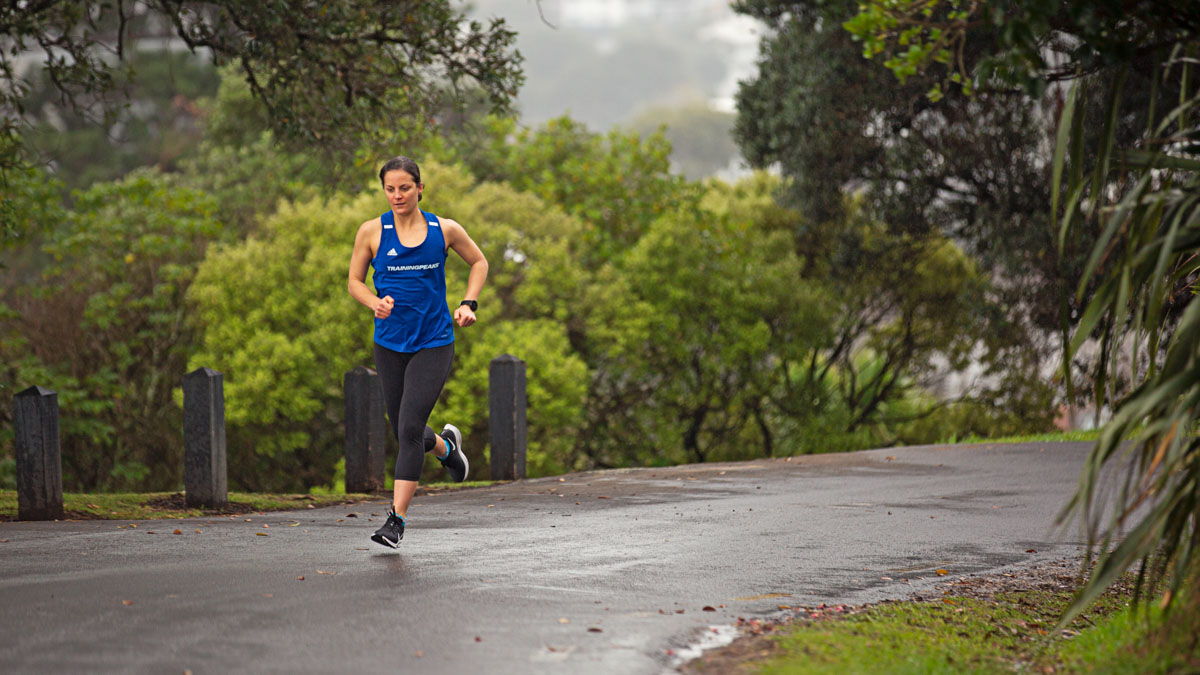When you study the careers of elite endurance athletes who perform at a high level over an extended period of time — folks like elite runner Abdi Abdirahman, who qualified for five U.S. Olympic teams over a span of 16 years — the thing that always stands out is consistency. Athletes who not only reach the top but stay on top tend to be very consistent in their approach to training.
Recreational endurance athletes, by and large, are more erratic in their training. In search of great leaps in performance, they bounce from one coach or system to another, wondering why the leaps they seek never come. The answer, in most cases, is lack of consistency. Once you’ve found a good formula, you need to stick with it, mining it for incremental improvements year after year.
Why Base Training Is the Perfect Time to Experiment
There is such a thing as too much consistency, however. Even athletes like Abdirahman, who perform at peak levels well into their 40s, experiment with small adjustments to their training. They do so not in search of giant leaps in performance but in pursuit of marginal gains. The ideal time for such experiments is the off-season or early base-training period. The reason is that some training experiments turn out well, while others don’t. When you test a new method during the off-season or early base-training period, you have plenty of time to get back on track before your next big race if the experiment fails. But you also have plenty of time to take full advantage of the new method if things go well.
Certain training modifications come with little risk and can be done anytime. An example of a low-risk training tweak is shifting a couple of weekly easy runs from the roads to the trails. Other modifications carry a somewhat greater risk of not working out and are best to introduce in the off-season or early base-training period. Following are three such modifications that you might want to consider this year.
1. Carb-Fasted Workouts
Research has shown that training in a glycogen-depleted state (glycogen being the storage form of carbohydrate in the body) increases aerobic capacity, or VO2max. A secondary benefit (which many athletes mistakenly believe is the primary benefit) of carb-fasted workouts is that they increase their muscles’ fat-burning capacity, thereby improving endurance.
The most straightforward way to train in a glycogen-depleted state is to work out first thing in the morning, before breakfast. A more sophisticated protocol entails doing a normally fueled high-intensity interval workout in the afternoon, eating a low-carb dinner, and then doing a low-intensity workout the next morning before breakfast.
It might sound radical, but it’s really not. In some athletic environments, carb-fasted training is the norm. For example, most elite Kenyan runners do their first and most challenging run of the day before breakfast, not every once in a while but routinely. If the practice were even remotely dangerous, Kenya’s runners wouldn’t be so darn good. That being said, if you’re not accustomed to training in a glycogen-depleted state, you should ease into it, starting with a relatively short carb-fasted workout. If this goes well, try a slightly longer or more intense workout the next time.
You’ll get the most benefit from carb-fasted workouts if they’re challenging enough to leave you moderately but not severely fatigued and if your diet is generally moderate to high in carbohydrates outside of those occasional low-carb dinners. Note that a little carb-fasted training goes a long way. In my own experimentation with this method, one such workout done every other week was sufficient to produce noticeable benefits (i.e., higher VO2max).
2. Form Adjustments
As a general rule, I am against making conscious changes to running form such as switching from heel striking to midfoot striking. That’s because research has consistently shown such changes have a negative impact on running economy. They’re also highly disruptive to the training process. Each runner’s natural stride pattern is so deeply ingrained that modifying it requires intensive focus, which is difficult to sustain when there’s a race on the horizon.
The exceptions are those unlucky runners who keep getting injured. If you just can’t stay healthy, there’s a chance that modifying your stride in a targeted way will help you break the cycle. I speak from experience. Around the time I turned 40, I developed chronic pain in my right Achilles that I eventually overcame by adopting more of a “seated” running style (picture Groucho Marx’s signature walk) that reduced strain on the tendon just enough to allow me to return to full training.
Given the disruptive nature of running form changes, I recommend that you save them for the off-season or early base-training period, if possible. It’s also best that you execute these changes under the guidance of a physical therapist or coach with expertise in this area. The last thing you want to do is go to all the trouble of adjusting your stride, only to make the wrong adjustment!
Similar guidelines apply to getting a professional bike fitting, especially if it’s for a new time trial bike. It always takes a little time for the body to adjust to a new riding position, even when it represents a slight change from a prior position, and these adjustments don’t always work out. Hence, the ideal time to switch to a new bike or experiment with a modified riding position on an existing bike is — you guessed it — the off-season or early base-training period.
3. Increased Training Frequency
Most athletes — and virtually all well-coached athletes — have a relatively stable weekly workout cycle that helps them keep their training organized and predictable. For example, a runner might do a moderate-intensity workout on Tuesday, a high-intensity workout on Friday, a long run on Sunday, easy runs on Wednesday and Saturday, and rest on Monday and Thursday.
One way to stimulate progress from one training cycle to the next is to adjust your microcycle in ways that accommodate higher training loads. The most obvious way to do this is to add sessions. Returning to the previous example, the runner might add another easy run on Thursday. Like the other changes we’ve discussed, this one is not guaranteed to work out. You might add a session or two to the week only to discover that your body can’t tolerate the increased training frequency. If you made the adjustment in the off-season or early base-training period, no sweat. You have plenty of time to catch up on recovery and perhaps find subtler ways of squeezing a little more fitness out of your previous weekly routine.
These are just a few of the many training adjustments you might want to experiment with at this time of year in search of greater fitness and improved performance in the season ahead. While no-risk adjustments can be made at any time, those that may or may not work out should be reserved for right about . . . now!









